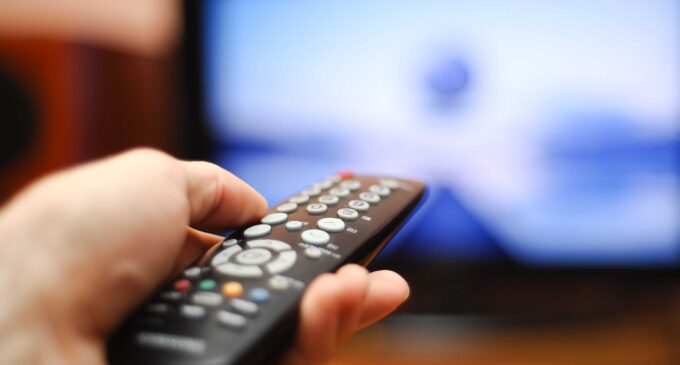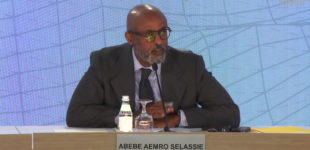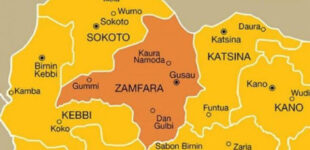Many lies about Pay-TV pricing in Nigeria

BY OLALONPE AKINTEYE
In life, making decisions based on wrong information, almost always, leads to wrong conclusions and dire outcomes.
In the media, where I worked for quite a while, relying on wrong information is a basic ingredient for production of embarrassingly inaccurate or outright false reports. This may not be because the journalist is a fabulist by nature, but because he or she has neglected the crucial requirement of cross-checking leads provided or totally trusts the information provider. It is a same-sided coin. Either way, the journalist is not likely to smell like roses when his/her report turns out to be inaccurate or downright false.
This brings me to what I have seen the media do over the last one month in relation to pay-TV operations and pricing in Nigeria. Acres of newsprint (pardon the exaggeration) have been dedicated to presenting MultiChoice as an entity committed to treating Nigerians badly via its subscription rates and billing model.
The published reports, to me, look suspiciously the same. Stylistically, that is. But that is another matter. The concern of this writer are the inaccuracies served the reader. I was a victim of this kind of thing (guess we all have been), when as a child, I feverishly spread the story of Thunder Balogun, the legendary footballer with the fabled savaged shot, ripping up the stomach of a white goalkeeper.
Some oral tradition! Even if there was a way to check the story’s veracity, I never bothered. Such, however, is not pardonable in journalism. The recent reports on the subject matter have been the staple of discussions for a while, therefore not new. But the current zeal with which the inaccuracies are being peddled is a cause for concern.
Credit where due.
The reports correctly informed that MultiChoice recently reduced subscription prices across Africa, excluding Nigeria and South Africa. The reduction rate was given as 20 per cent. This is so very wrong, as I would show later. This fib was conceived to make Nigerians see themselves as vassals and develop a strong sense of grievance against MultiChoice.
More ammunition for war would have been available had South Africa been included among the countries affected by rate reduction. The invented 20 per cent slash got people’s goat, with many people on online chatrooms provoked into calling the Consumer Protection Council (CPC) names for not ordering MultiChoice to lower its prices in Nigeria.
Last year, two Lagos lawyers approached a court, asking it to order MultiChoice to revert to its old rates. The court sensibly told them that they were under no obligation to use the company’s service and that it has no power to impose prices on services provided by private enterprise.The CPC could not have been ignorant of that ruling.
The prevalent belief within these shores is that Nigeria is home to the largest population of MultiChoice subscribers anywhere. Figures bandied range between two and four million. No source has ever been cited, let alone proof, in support of these figures. A September, 2015, statement issued by Naspers, the parent company of MultiChoice, and published by mybroadband.co.za, said DStv subscribers in South Africa grew from 5.1million to 5.5million from the previous year. If our local figures are correct, there is still some ground to make up before Nigeria could be considered as having the highest number of MultiChoice subscribers.
I move to the alleged 20 per cent slash and the almighty lie that Nigerians have always paid more than MultiChoice subscribers in every other country. In Ghana, DStv Premium subscribers, until the recent price slash of 8 per cent, were paying 395 Cedis ($91.25). Kenyans paid 9,400 shillings prior to reduction, but now pay 8,180 shillings ($80.2), representing 13 per cent slash. In Uganda, Kenya’s next door neighbour, the price was formerly 334,000 Ugandan shillings, but now down by 16 per cent to 287, 250 Ugandan shillings. Subscribers in Zimbabwe also benefited from the reduction, with prices down from $81 to $72.
South African subscribers continue to pay 759 rand ($56.16), while Nigerian subscribers fork out N13,980 ($43.68), the price they were paying long before naira succumbed to anorexia against the dollar at N457 to $1.
For Compact Plus, DStv’s Tier 2 bouquet, Kenyan, Ghanaian, Ugandan and Tanzanian subscribers pay their respective national currencies’ equivalent of $53.16, $61.25, $55.30 and $56.35 respectively. Those in South Africa continue to pay 459 rand. Nigerians pay N9, 420 ($29.43), a price arrived at way before the naira became an intensive care unit patient.
Journalists can certainly avoid provoking needless red-eyed rage among members of the public by taking time to look up things, particularly on the internet, rather than relying on being drip-fed by people with an agenda.
The price differentials, I believe, are products of the local economic environment. Just talking to businessmen in Nigeria will reveal that running a business in Nigeria is a mighty ordeal as local and international companies have discovered and as shown by numerous studies on ease of doing business.
A company is, therefore, not insulated because it is named MultiChoice. Those who have launched the crusade against price differences, I believe, also fail consider the possibility of naira’s depreciation being on a grander scale than those of other African currencies to the dollar. MultiChoice buys television content in dollars, we must remember.
That Nigerians are already paying less, I believe, relieves us of the justification to be included among the countries that recently benefited from price reduction. Don’t get me wrong. I’d gladly pay as little as possible for top-class pay-TV entertainment, but I know it does not come cheap anywhere in the world.
Now to operations. There has been an agitation for the institution of a pay-as-you-watch format in subscription television. For long, it was presented as pay-per-view, but these days, the agitators prefer pay-as-you-watch or pay-as-you-view.
The agitators have duped people into confusing pay-television with video-on-demand service such as what Netflix and other providers offer or the DStv BoxOffice for which a user pays only for what is watched.
For logically obscure reasons, only MultiChoice is asked to offer this service that is alien to the pay-television model. This is despite the use of the monthly contract model by every other pay-television.
Pay-television companies in other countries also operate the monthly contract model and bundle channels in a manner that suits viewing tastes and ensure sustainability of the business.
More bizarrely, pay-as-you-view agitators have not spelt out how they think the model should operate. Do they want to pay per show, per channel or what exactly? The pay-as-you-view “theology” being preached derives from the pay-as-you-go (PAYG) model in the telecoms industry, which is not the same as the pay-television industry. In telecoms, what is bought and paid for (only once) is spectrum.
Pay-television operators, on the other hand, must continuously buy content because they are essentially content vendors. They continue to pay increased costs when content contracts come up for review. To pay only for what you watch, a video-on-demand service is what you need, not a television bundle.
Pay-as-you-watch or view, is also not the same as pay-per-view (PPV), the model that gives a subscriber the chance to watch one-off high-ticket events in sports or entertainment. A PPV subscriber is required to have a subsisting pay-television subscription and then pay an additional sum (usually very high) to watch an episodic event like the 2014 Floyd Mayweather vs Manny Pacquaio fight. On PPV, American boxing fans paid $99.5 for the two-hour fight.
Back home, those who watched the same fight on SuperSport channel paid no additional fee. Want to pay that amount to watch a two-hour fight? Not sure anyone would sign up for that.
Akinteye, a public affairs analyst, writes from Ibadan.
Views expressed by contributors are strictly personal and not of TheCable.














I totally disagree with the writer of this article. Why? Most programmes being shown on several of Dstv channels have been shown so much that one begins to wonder if this company has been investing on new ones at all. The only exception to this are probably, news & Supersport channels. I believe subscribers should be paying for channels we are interested in and not every channel being forced on us.